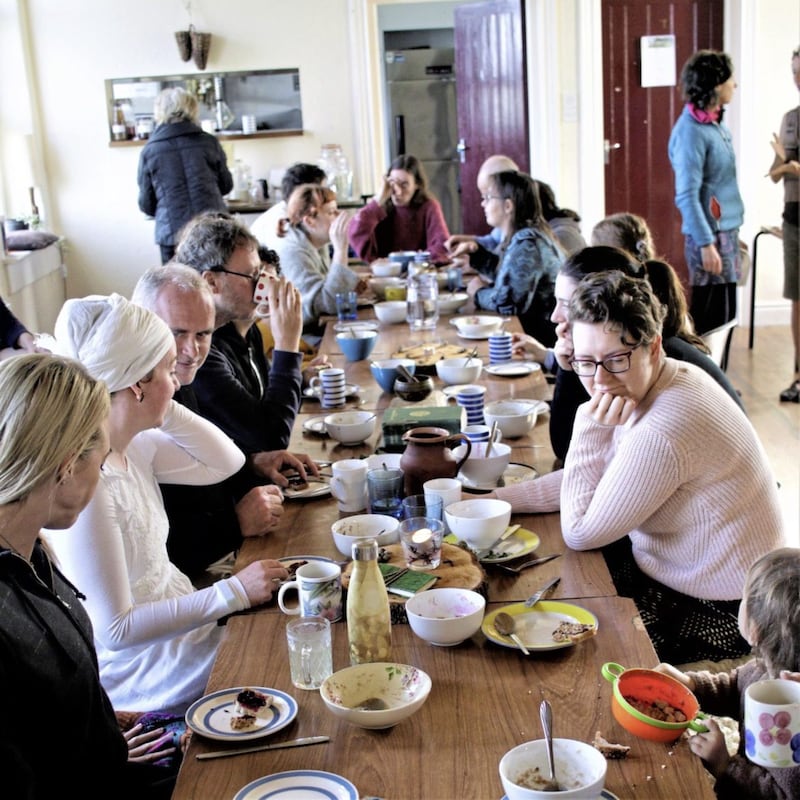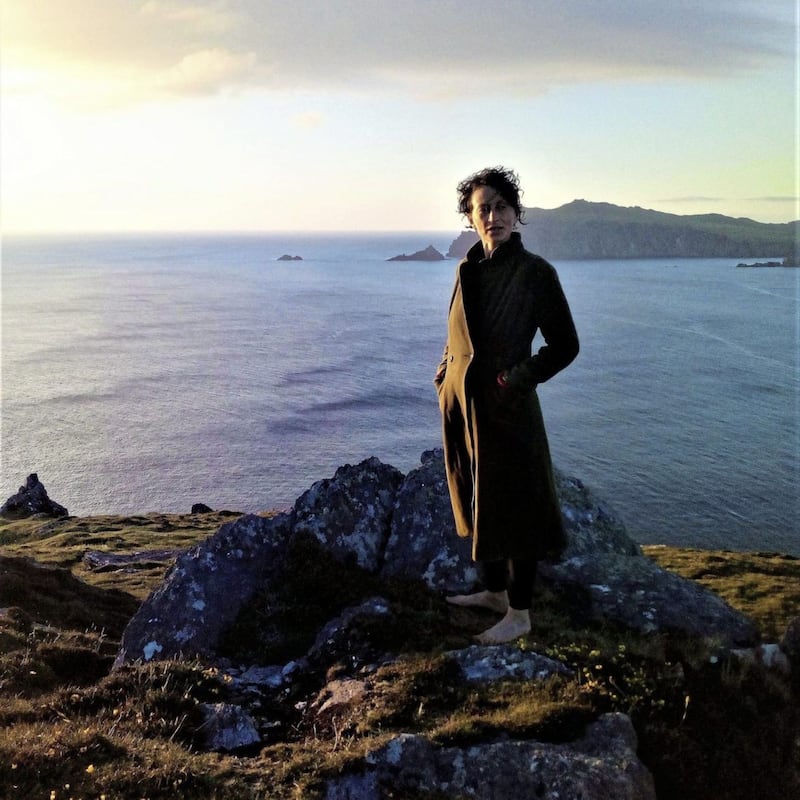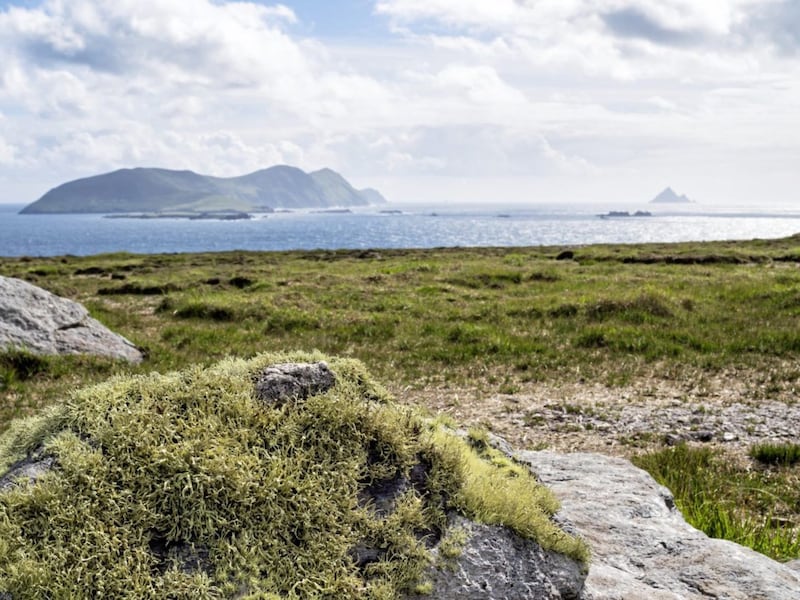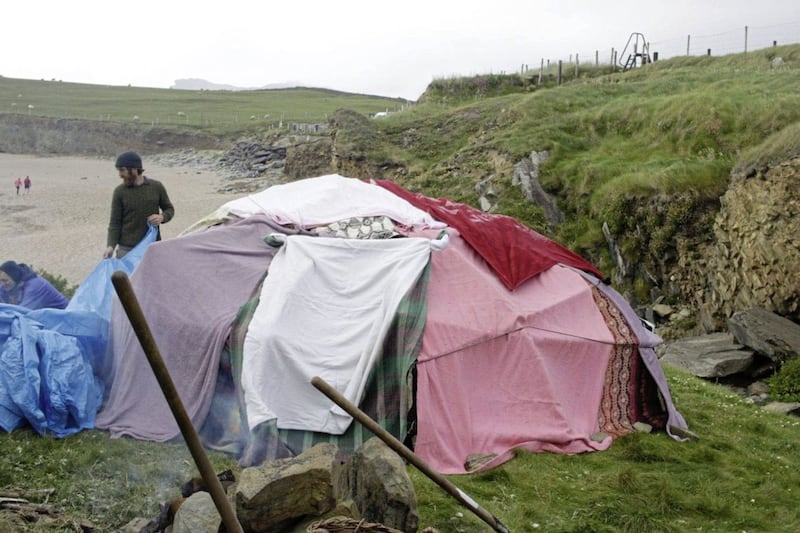THE low rumble of the Atlantic Ocean thumping on to the rocky shoreline is a constant backdrop along this coast of dark, jagged edges in which an occasional sandy cove nestles.
The landscape on the furthest tip of the Dingle Peninsula has an ancient feel to it and on Clogher Head a gnarled slab of phallic rock – a fertility stone – is set in the remains of an eroded stone circle, suggesting this has long been regarded as a sacred location.
It is a a wild place of stunning coastal scenery and the ever-churning sea where you almost feel obliged to speak Irish – the sounds and rhythm of the language seem to undulate on the gusts of wind that blow in from the Atlantic and on the waves crashing to the shore.
Although I studied at night classes and in more formal academic settings and I have a head full of vocabulary and grammar my Irish has always been stunted, spoken in limited set pieces with little spontaneity.
Based in Brú na Gráige, a purpose-built Gaeltacht school, the organisers of Díseart Gaelach Fiáin (Wild Irish Retreat) believe that the best way to reconnect with Irish is to experience it as a living language. This is a total immersion weekend and not for absolute beginners, but a basic working knowledge is enough to get you by.

Every Irish lesson should start with an early morning yoga workout followed by a vegetarian breakfast. They don’t of course, but if they did the language might be in a much healthier state than it is.
Kundalini yoga focuses on breathing and mantras as well as the standard physical poses. Timmy Creed, who leads the class, is assisted by Maggie, a sean-nós and vedic singer who provides a beautifully meditative soundscape as the group bends and twists, hums and chants, inhales and exhales.
With bodies opened up and minds sharpened, it is time for a breakfast of oats, nuts, grains, honey, sourdough bread, home-made jams and pestos as well as lots of tea and coffee. Food is a big part of the weekend retreat.

If all Irish teachers exuded the passion and enthusiasm of Siobhán de Paor the whole island would be speaking the language fluently within a few weeks. She takes just a single word and mines it for layers of meaning and nuance, drawing it out from the dictionary and verbally caressing it to make it pulse with life.
Each of the students draws a slip of paper with a word on it which we are encouraged to explore and with Siobhán’s endless enthusiasm this much neglected and often derided language suddenly becomes vibrant and animated again.
Then it is a case of taking it out of the classroom and into the open, using Irish as it was meant to be used, a living, evocative and vibrant way to communicate – and what better way to do so than through a game of hurling.
Trooping down to Clogher Beach, a semi-circle of sand among the embrace of two rocky outcrops, I am in mostly listening mode, my fragile Ulster-Irish still becoming attuned to the dialects of Munster and Connacht of my fellow gaeilgeoirí, but words and expressions are starting to come together, imperfect and fractured, not quite flowing but being nurtured and drawn forth.

Diarmuid Lyng is a former Wexford hurler and TG4 pundit with an infectious passion for the sport. His hurling masterclass focuses on simple passes of the sliotar, catches and making sure no-one tries anything too dramatic with the hurls.
Then the group is split into teams and a fast-paced, chaotic match takes place on the sand underneath a burning September sun as the tide breaks on to the shore. All I can say is that there is no way the goal I score should be disallowed and my team would have won otherwise.
After a dip in the sea to cool down, it is back to the Brú for a wild-food lunch, prepared by Cearbhuil Ní Fhionnghusa, along with Roisin and Caoimhín, and some downtime and chat. One of the striking things is how all the 20 or so participants seem to find a common level with those they are talking to, the more fluent gently encouraging and nourishing those like myself who are less proficient and allowing the language to emerge naturally, with a few words in English now and again to help keep things moving.
In the afternoon Cearbhuil leads us on a foraging adventure, plunging into hedgerows in search of shrubs and herbs that in her outdoor kitchen we cut up and mix in with beeswax and freshly pressed hazelnut oil to cook over an open fire and then let cool and solidify to produce a healing skin balm.

At low tide we walk along the coast and clamber down to a small inlet called Cuas na nEighe and, knee-deep in the lapping waves, gather seaweed – pepper dulse, sea spaghetti, sea lettuce and sugar kelp – to be mixed in with our evening supper and that also turn up in lunch the next day along with the hedgerow herbs we gathered earlier.
Nothing can quite describe the surreal timelessness and out-of-body experience of a ‘sweat lodge’. More commonly associated with indigenous cultures of the Americas, there is archaeological evidence that sweat lodges were also common in ancient Ireland.
The one on Clogher Beach is a dome constructed from willow branches covered with blankets and laid over with tarpaulin. As evening cools we shiver in our swimwear and crawl inside where, in total darkness, rocks heated red on an open fire outside are passed in and placed in a central pit.
They give off a penetrating dry heat until cold water is poured over them to create gushes of steam that recreate the humid effects of a sauna.
With Cearbhuil leading a meditation and yoga teacher Timmy introducing an occasional mantra, this is an intense and unsettling experience. After an imponderable length of time in an all-encompassing blackness, dry and humid heat, ancient Indian and Irish mantras, I emerge with the others back into the sharp coldness of the night, my mental and physical perception of the world slightly shifted.
The final morning is slightly more relaxed: a yoga workout, breakfast, another delve into the language led by Siobhán and then a walk up the road to Clogher Head which overlooks the Blasket Islands
Standing in a circle for a final meditative gathering as the Atlantic pounds on to the rocks below, Maggie delivers a haunting rendition of the song Samhradh Samhradh that still resonates in my head.
Tá m'anam fiáin ann fós.
Factfile
For further information on future retreats visit wildirishretreat.com.
Prices for a weekend retreat – arriving Friday evening and departing on Sundays after lunch – include accommodation, food and participation in all the activities.
The next planned retreat is for four days over the Easter weekend next year.
The accommodation at Brú na Gráige is in mixed dormitories with shared toilet and washing facilities.
If driving from the north allow at least six hours from Belfast to Clogher Head, not including stops along the way.







